Courgette, Cheese & Basil Quick Bread
Courgette, Cheese & Basil Quick Bread is a simple but delicious savoury loaf. Instead of yeast, it’s made with self-raising flour and eggs, so there’s no kneading and no proofing. Just mix up the ingredients and bake straight away.
With a moist and soft, cake-like texture, plus robust cheesy, herby, garlic flavour enhanced by strands of courgette, it’s in the tradition of French cake salé or savoury cake. Perfect as a snack, as a nibble with drinks, alongside meats and cheeses, or soups and salads.
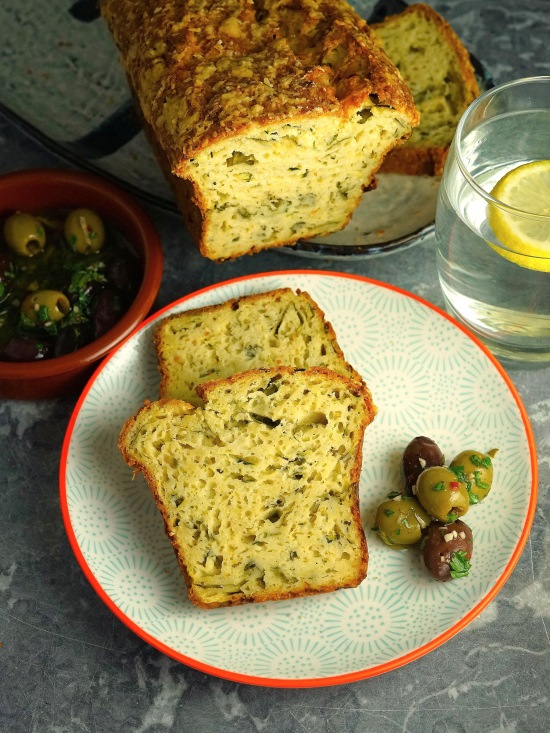
Disclosure: this post may contain affiliate links. If you buy via my links, I may earn a small commission at no extra cost to you.
Jump to Recipe
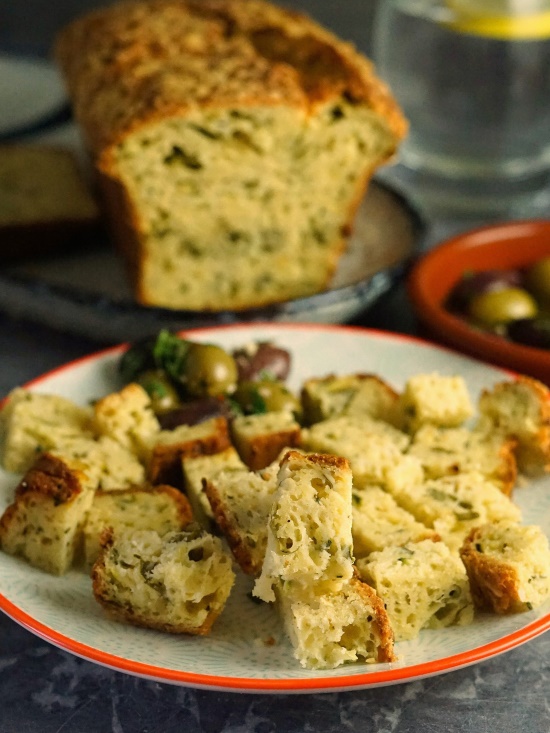
SAVOURY QUICK BREADS
Quick breads completely live up to promise of their name. Made using baking powder, bicarbonate of soda, or self-raising flour instead of yeast, there’s no kneading or hours of proving. Just mix and pop straight into the oven, they’re perfect when you want to rustle up a loaf at short notice. Soda breads, like my Cheese Soda Bread and Fruit Soda Bread, are probably the best known quick breads. But they’re not the whole story.

A few years ago, I discovered the delicious world of savoury quick breads that include eggs. While the texture of soda bread is a cross between bread and cake, quick breads that contain eggs are much more cake-like: moist and soft. Once you have a simple base recipe (self-raising flour, butter, eggs, milk, and usually cheese too) you can include whatever extras you like.
I’ve already posted a number of savoury quick breads which I think are delicious: Cheese & Walnut Loaf, Cheese & Bacon Loaf, and Cheese & Chorizo Quick Bread.
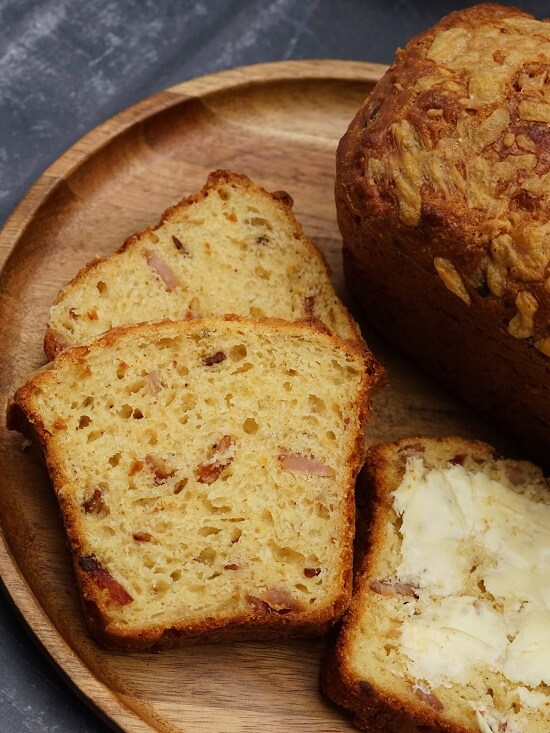
I think they’re perfect as a snack, with or without butter, just as you might eat a Cheese Scone. But you can also eat them alongside cheeses, cold meats, pickles, olives, etc. or with soup or salad. Or almost anything else you fancy.
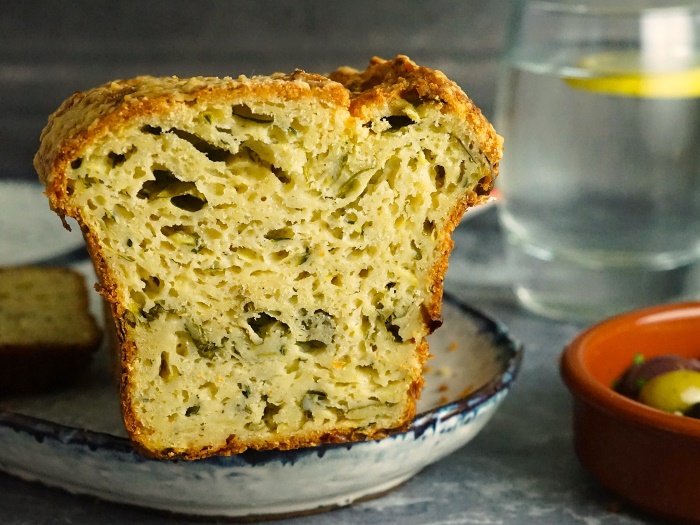
CAKE SALÉ: FRENCH SAVOURY CAKE
But before I tell you about my latest savoury quick bread, a word to those sceptical about the idea of a savoury cake. I recently learned that the French have been making them for a good while. A follower on social media, seeing my own savoury quick breads, said they sounded very much like cake salé or French savoury cake. After a bit of research, I have to agree.
Sliced or cut into little cubes, salé is often served with other nibbles and drinks at pre-dinner social gatherings known as l’heure de l’apéro. Cheese, ham, and olives seems to be a popular flavour. I see L’aperitif Cake is also sold in supermarkets with different cheeses and goodies like chorizo or bacon and vegetables such as peppers or courgette.
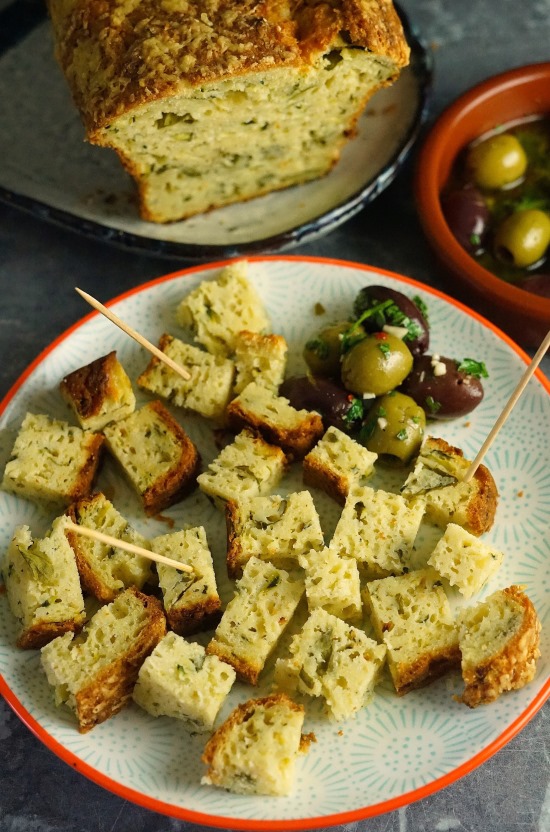
So, in a nod to cake salé, I decided to give my latest savoury quick bread a touch of southern French flavour. Inspired by Provençal Soupe au Pistou, I came up with Courgette, Cheese & Basil Quick Bread. Full of gutsy flavour, it was even better than I’d imagined.
COURGETTE, CHEESE & BASIL QUICK BREAD
You’ll find a recipe card at the end with ingredient amounts and full instructions. But I recommend you read this whole post first for extra tips and step-by-step images to help you.
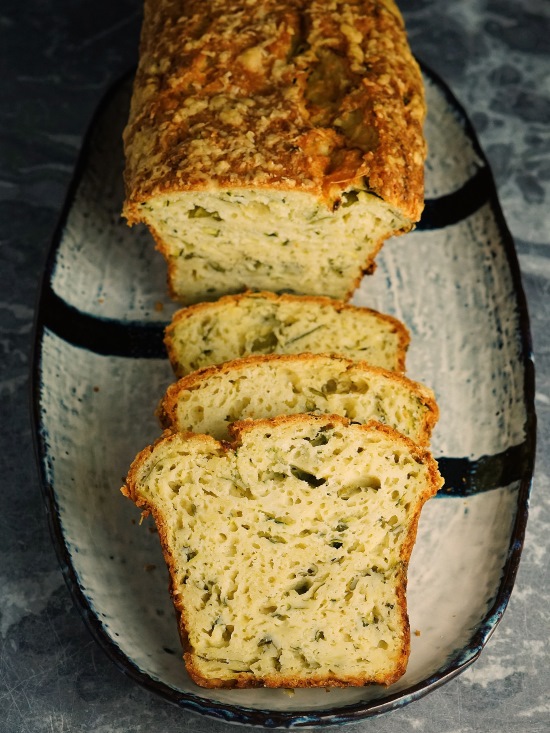
The only essential piece of equipment is a small loaf tin with a capacity of 450 ml. These are usually sold as 1lb loaf tins. Mine is non-stick, but I grease it with extra butter anyway. If in doubt, line the bottom of your tin with a strip of greaseproof or baking paper that’s long enough to come up above the rim of both short sides. If necessary, you can lift the loaf out using these ‘handles’.
INGREDIENTS & PREPARATION
Whenever you bake with raising agents like baking powder, bicarbonate of soda, or self-raising flour, it’s important to prepare all the ingredients first. That’s because as soon as you mix the wet ingredients into the dry, they’ll start working. So, whatever you’re making should go into the oven as soon as possible before they lose their power.
To get the best results, you should ensure these items are well within their ‘Best Before’ date. Once a pack is open, ideally you should use it within a few weeks too.
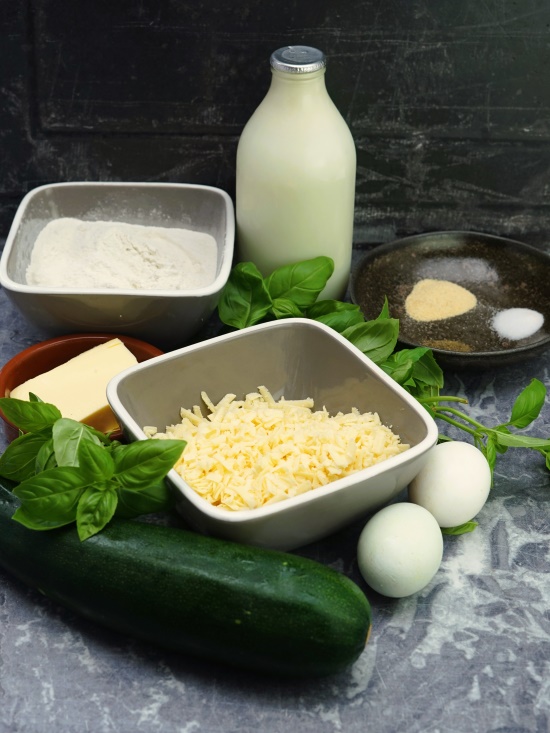
Because courgettes can contain a lot of water, you’ll need to remove as much as you can to prevent a soggy loaf. Start by coarsely grating the courgettes (you can discard any large seeds in the centre), toss with a little salt, then set aside in a sieve while you gather and prepare the rest of the ingredients. The salt helps to draw out the liquid and, once it’s sat for a while, you squeeze handfuls of courgette to remove it. Although some courgettes are waterier than others, you might be surprised at just how much comes out.
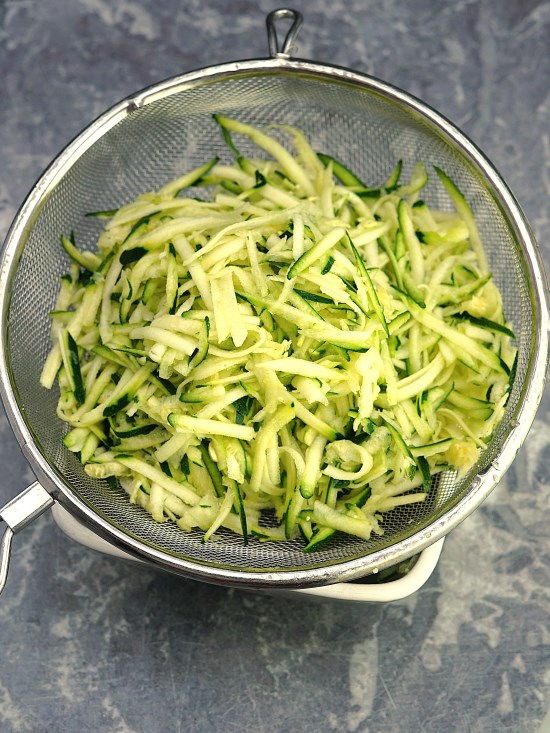
For the loaf in this post, I started with one large courgette weighing around 400 grams. After topping and tailing and discarding the seeds I had 300 grams of grated courgette. But after salting and squeezing I had just 230 grams. So, although you might start with a big heap of grated courgette, don’t worry that everything won’t fit into that small loaf tin. It will.
The other ingredients you’ll need for Courgette, Cheese & Basil Quick Bread are self-raising flour (or plain flour + baking powder), black pepper, garlic granules or powder (optional), butter, mature Cheddar cheese, fresh basil, eggs, and milk.
QUICK & EASY
Once you’ve gathered and prepped the ingredients, making the batter for Courgette, Cheese & Basil Quick Bread really is quick – and easy!
To start, sift the flour, garlic powder or granules if using, salt and pepper into a bowl. Then rub in the butter and add coarsely grated cheese plus plenty of basil. Roughly tearing the basil leaves, while leaving small ones whole, is better than chopping. It’s nicer in terms of both texture and appearance (cut edges tend to go black) and is also thought to retain more of the herb’s essential oils.

The grated courgette goes in next. I take the opportunity to give each handful another squeeze before adding to the bowl and stirring in. If strands of courgette stick together, run your hands through the mixture to separate and coat in flour.
Now make a well in the centre of the mixture and tip in the beaten eggs. Start stirring to create a thick batter, adding just a little milk to help bring it together.
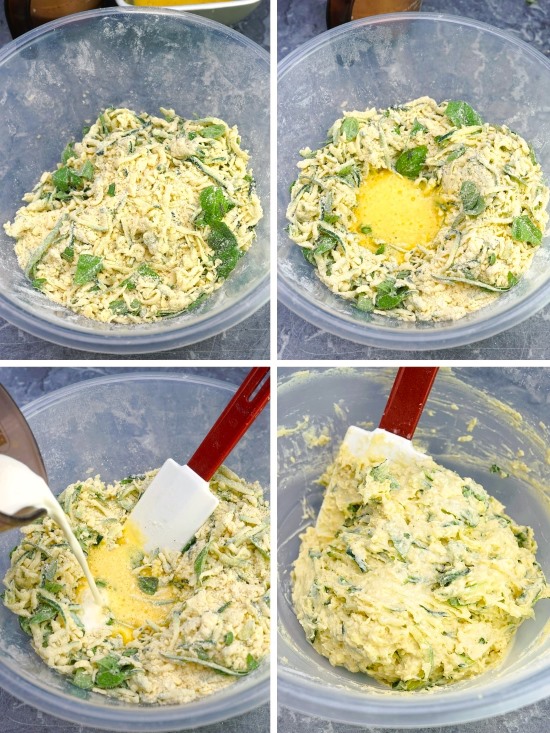
Because courgette is likely to release more water as it cooks, I add much less milk for this bread than my other quick breads. Just 30 ml is usually enough but use the final image in the set above as a guide to the texture you’re looking for.
Transfer the mixture to your loaf tin, prepared as above, pressing down lightly, making sure it goes right into the corners, then smooth the top. Finally, sprinkle over more cheese, finely grated this time.
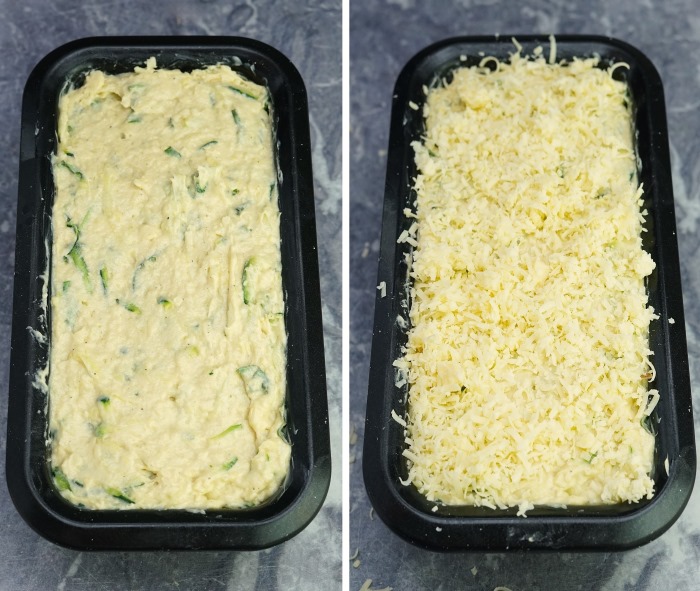
BAKING COURGETTE, CHEESE & BASIL QUICK BREAD
Put the tin on the middle shelf of your oven preheated to the temperature shown in the recipe card. I find that the small tin is easier to manoeuvre if I put it on a baking tray. The bread should take between 50 and 60 minutes to get risen, brown, and cooked all the way through. To check, insert a skewer or cocktail stick: it should come out clean when the loaf’s done. Ovens do vary though, so I recommend you check after 35 – 40 minutes. If it already looks quite dark, then cover loosely with a piece of foil.
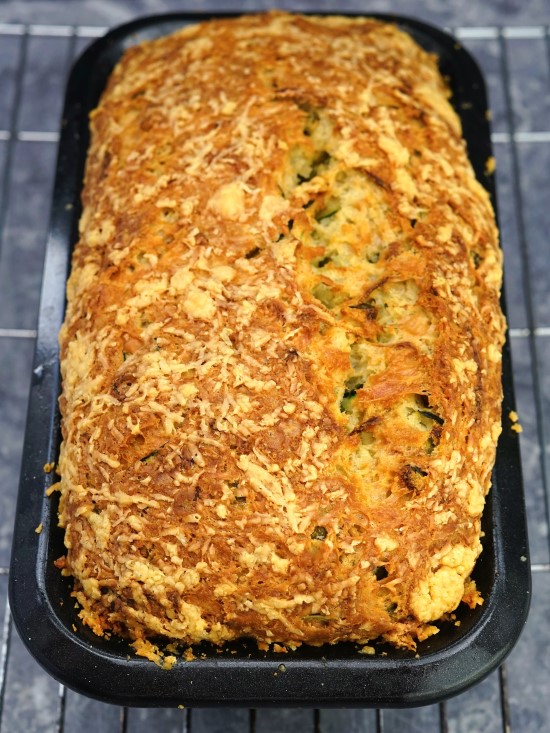
When the loaf is done, leave it in the tin for 5 – 10 minutes, sat on a cooling rack. Then tip or lift it out and place on the cooling rack until cold. Don’t be tempted to cut into it while its hot: just like sweet cake, it will crumble.
STORING & SERVING COURGETTE, CHEESE & BASIL QUICK BREAD
I’ve been surprised to find that Courgette, Cheese & Basil Quick Bread stays good to eat for 4 – 5 days. I wrap it in foil and store in an airtight container. Room temperature is fine, or pop in the fridge if the weather’s warm. Even after 5 days, you can perk it up in a microwave. It’s really good toasted too, with the cheese flavour pumped up and the crust going delightfully crispy. You can also freeze the cooled loaf while it’s fresh. I slice it first so I can defrost just as much as needed.
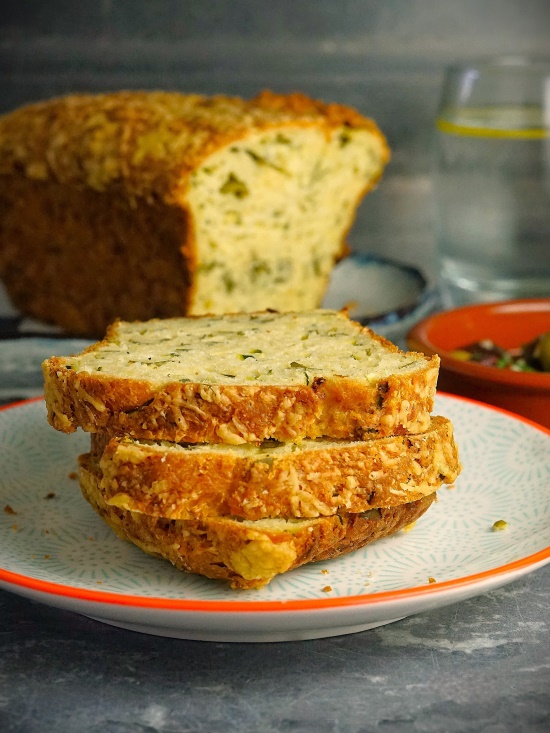
I love the robust cheesy, herby, garlic flavour of this bread, enhanced by strands of courgette. So flavoursome I’ve not even felt my usual urge, when confronted with fresh bread, to slather it in butter! For a quick snack, it’s hard to beat with just a few marinated olives on the side. But we’ve also eaten it with cheeses, cooked and cured meats, salads, and pickles as a full meal. And, like all savoury quick breads, there’s sure to be a soup it partners perfectly: try it with Minestrone Soup, Leek, Potato & Watercress Soup, Creamy White Bean Soup or, most fittingly, Soup au Pistou.
And now I’ve learned about cake salé or French savoury cake, we’re also enjoying diced Courgette, Cheese & Basil Quick Bread as a nibble with drinks too.
HAVE YOU MADE THIS RECIPE? LET ME KNOW WHAT YOU THOUGHT BY LEAVING A COMMENT & RATING.
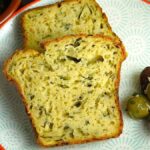
Courgette, Cheese & Basil Quick Bread
This tasty quick bread gets its rise from self-raising flour and eggs instead of yeast. That means no kneading and no proofing. Just mix and bake.
With a moist and soft, cake-like texture it's in the tradition of French cake salé or savoury cake. Perfect as a snack, as a nibble with drinks, alongside meats and cheeses, or soups and salad.
It's recommended that you read the accompanying blog post for extra tips and step-by-step images before starting the recipe.
Ingredients
- 400 g courgette (see Recipe Notes)
- salt
- 225 g self-raising flour (or plain flour + 2 level tsp baking powder)
- 1 tsp garlic granules or powder (optional)
- ¼ tsp black pepper
- 75 g butter plus extra for greasing
- 150 g mature Cheddar cheese (divided: 125g grated coarsely, 25g finely)
- 10 - 15 g basil leaves
- 2 med-large eggs (beaten)
- 25 - 40 ml milk
Instructions
-
Important: do not skip this step or the courgettes will release too much liquid as they bake, resulting in a soggy loaf.
Top and tail the courgettes then coarsely grate them: discard the seedy middle of large courgettes.
Put into a sieve, toss through a large pinch of salt then set over a bowl while you complete the next steps.
-
Preheat the oven to 180°C / 160° Fan / Gas 4 / 350°F with a shelf positioned in the middle.
-
Butter a small, non-stick loaf tin (approx. 19 x 9 x 6 cm, capacity 450ml or 1 lb).
If your tin isn't non-stick, put a long strip of baking/greaseproof paper along the bottom so it comes up above the rim of the short sides - you can use these as handles to lift it out if necessary.
-
Sift the flour, garlic granules or powder if using, pepper plus 1 tsp salt into a large mixing bowl.
-
Take handfuls of the courgette and squeeze hard to remove and discard as much liquid as possible then set aside.
-
Grate the butter into the flour mixture (dip the butter into the flour now and again to stop it sticking to the grater) then rub in with your fingertips.
Add the 125 grams of coarsely grated cheese and the basil leaves, roughly tearing the leaves as you add them to the bowl.
-
Take handfuls of the courgette again and squeeze once more before adding to the flour and cheese mixture.
Stir all the ingredients together: if strands of courgette stick together, run your hands through the mixture to separate them and ensure all are coated in flour.
-
Make a well in the centre of the mixture and tip in the beaten eggs. Start stirring to create a thick, cake-like batter, adding only just enough milk as needed to achieve this: refer to the image in the blog post to see the texture you're aiming for.
-
Transfer the mixture to the prepared tin, pressing down lightly, making sure you go into the corners, and smoothing the top. Sprinkle over the 25 grams of finely grated cheese.
Put into the preheated oven and bake until risen, brown and firm: a skewer or cocktail stick inserted should come out clean when done (50-60 min).
Recommended: check at 35-40 minutes whether the top is browning too quickly. If it is already quite dark, cover loosely with a piece of foil.
-
When the loaf is done, leave in the tin but on a cooling rack for 5 - 10 minutes. Tip or lift out of the tin and leave on the rack until cold before slicing.
The loaf should keep 4 - 5 days wrapped in foil in an airtight container. After that time, it's best heated in a microwave or toasted.
Can also be frozen whole or in slices when fresh.
Recipe Notes
Courgettes. Although 400 g may seem a lot in relation to the small loaf tin used, much of the water they naturally contain is removed before baking, reducing it to approximately 225 - 275 g.
RELATED RECIPES

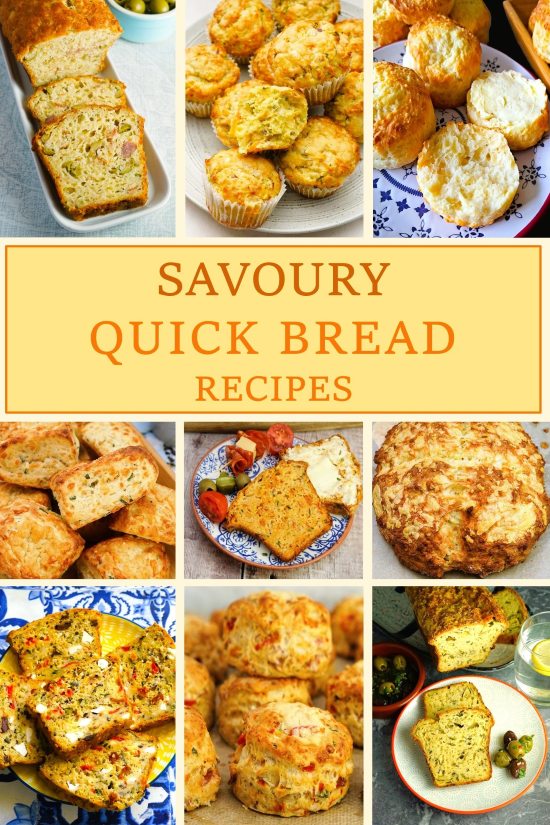

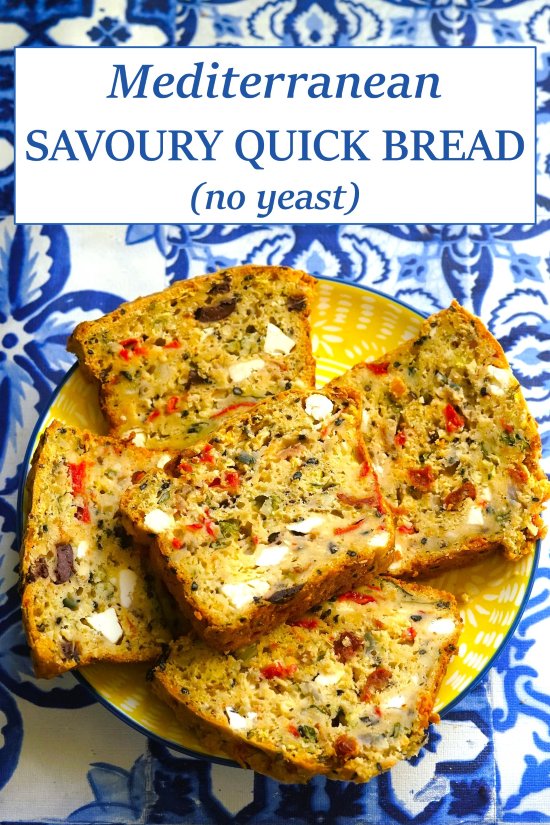
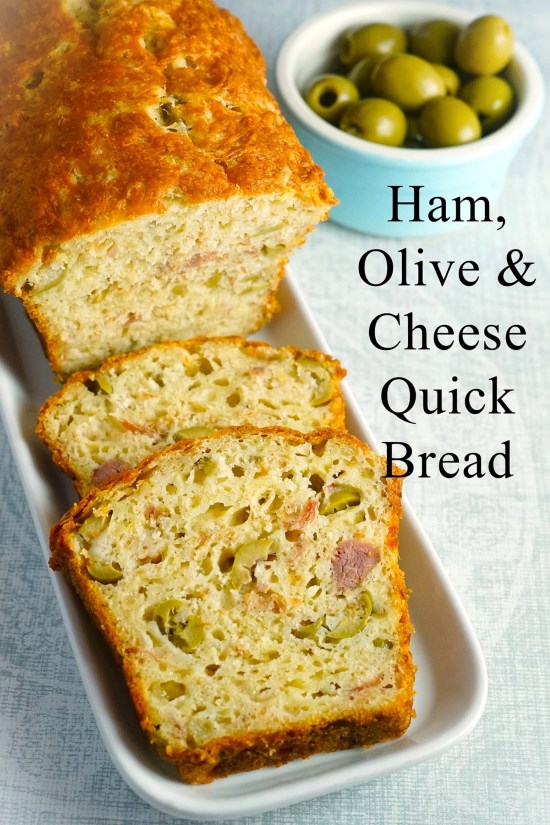

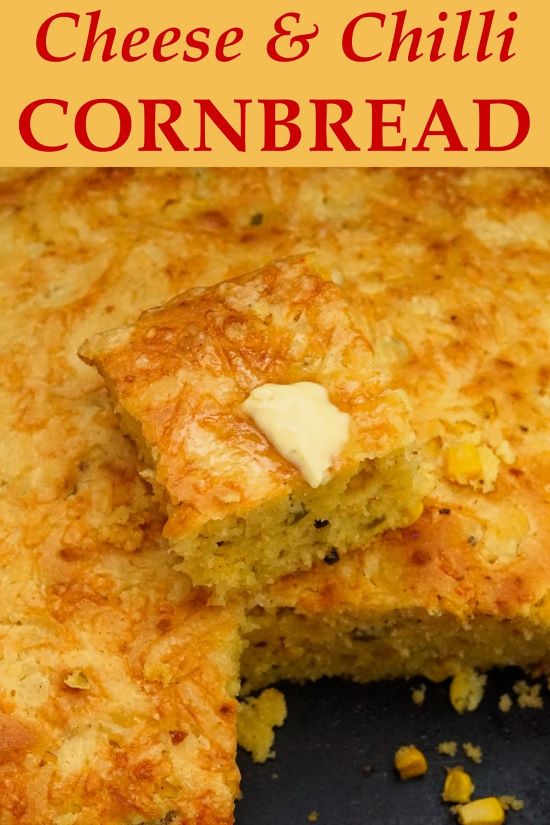
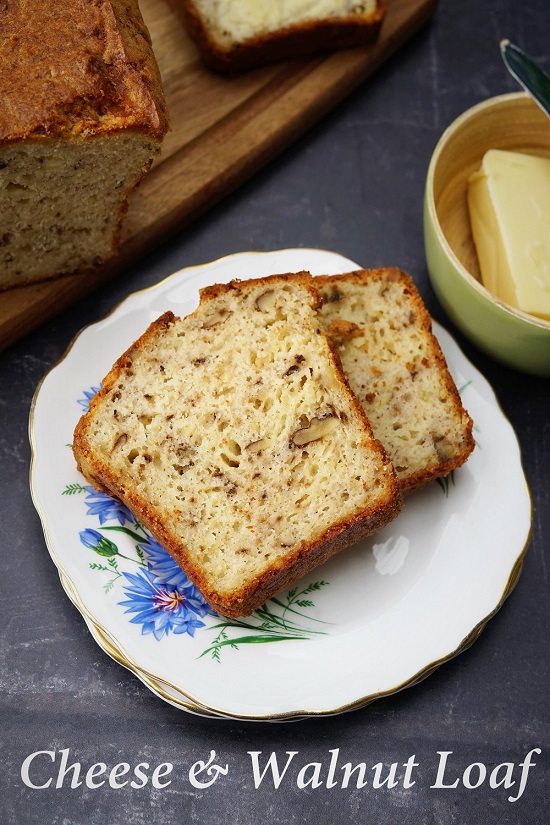
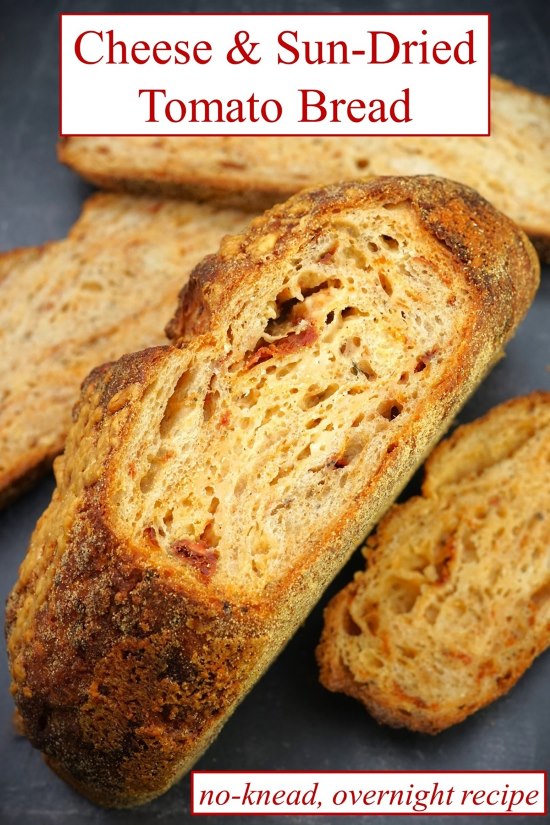
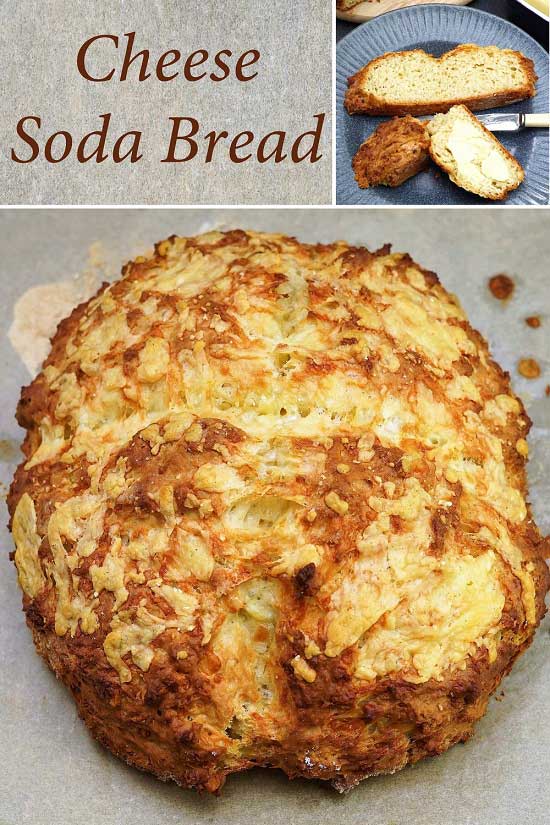
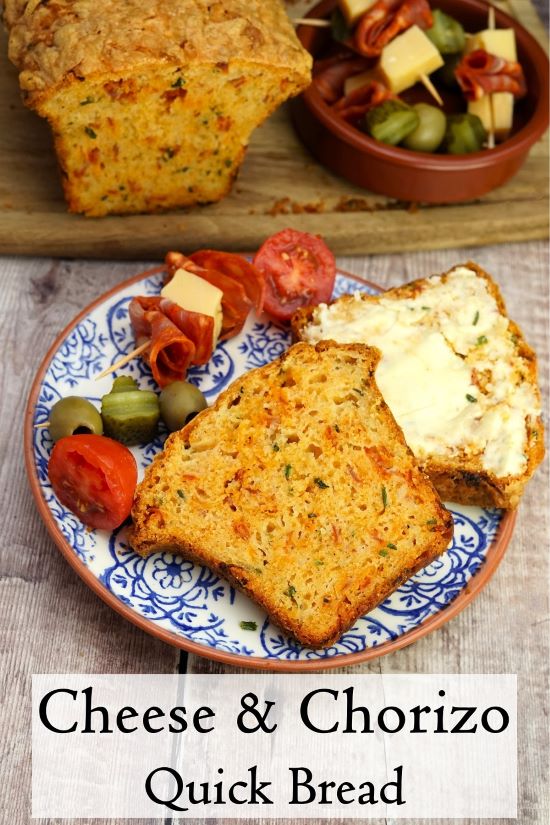

I love making this bread its so tasty also made courgette and walnut bread also really good, I love moorland eaters recipes they are tasty and always turn out well
Thank you so much, Bryan!